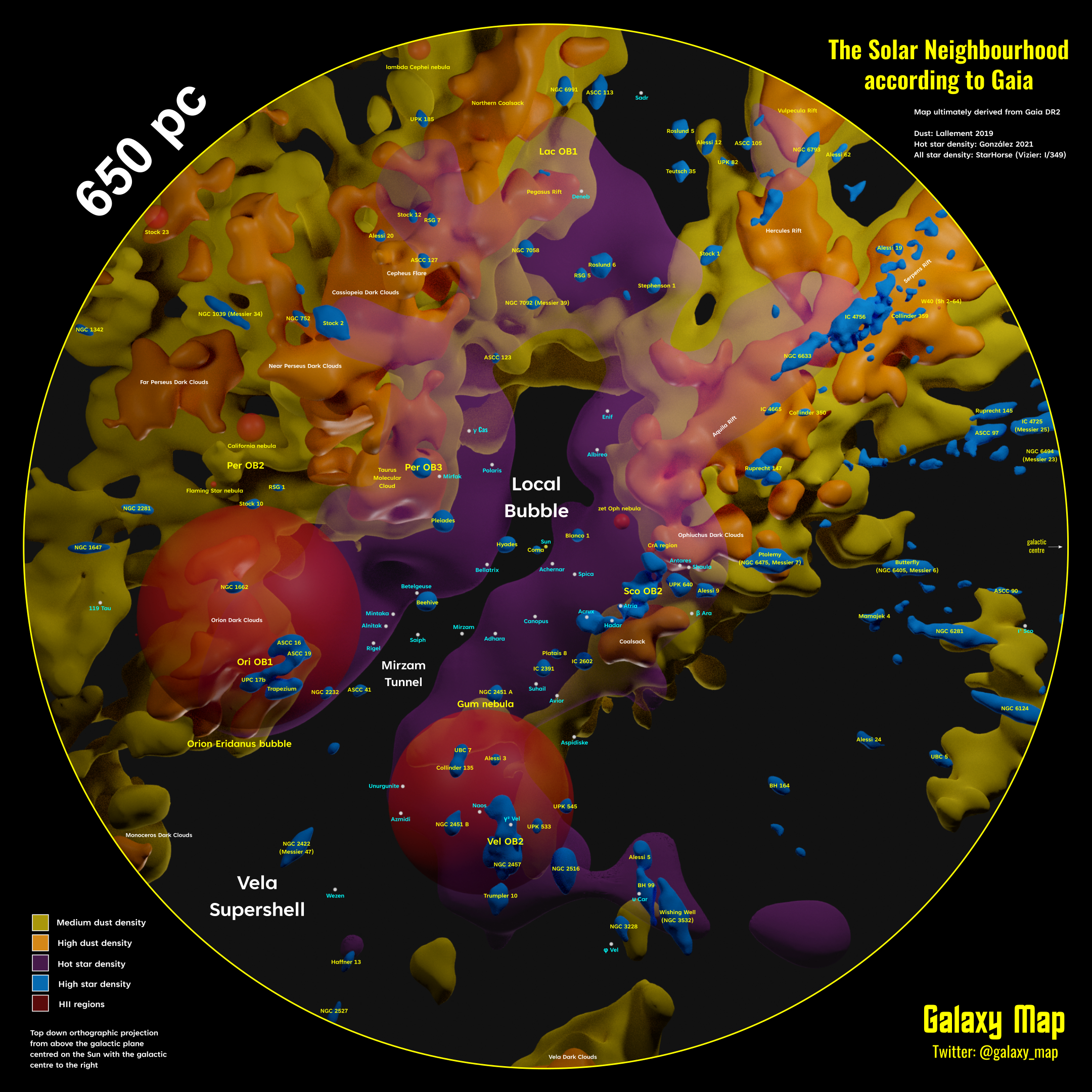Galactic cartographer Kevin Jardine used data from the European Space Agency’s Gaia satellite to make a map of our galaxy. The map can be easily accessed from his website, Galaxy Map, where you can explore our galactic neighbourhood within 6000 parsecs (almost 20,000 light-years).
A closer look in a radius of 650 pc has been released recently. We see dust in yellow/orange, stars in blue/purple, and gas in red.

Just like medical imaging can highlight parts of our bodies and differentiates them from the surrounding based on their physical properties, the same can be done using astronomical data to map the galaxy. Different regions in the sky have density contrasts, with older stars usually located in less dense regions than hotter stars. With this information, you can separate the regions into different clusters (and see if it’s dust, a younger cluster, an older cluster and so on).
There are 1.7 million stars featured on the map above. The center is “us” (meaning the Sun) surrounded by four quadrants. All maps available are in high quality, so you can zoom in or open in full screen, and look for objects you would like to see, like Orion constellation’s stars. Our perspective gives us the impression that those stars are always together, but with the map, you’ll see their real position in the galaxy.
The galactic cartographer plans to overlay the Galactic Quadrants: Alpha, Beta, Gamma, and Delta. He has also worked to make a board game called Guniibuu, based on the 10-parsec neighborhood.
This is just one example of what can be done with the mountain of space data publicly made available by space agencies such as NASA or ESA.

A more detailed map, where you can search for an object of your preference, hide some features, is available at this link. You can also follow the updated versions on Galaxy Map’s Twitter. The project is already starting to build an active community.
You can also read a paper describing the data here.



